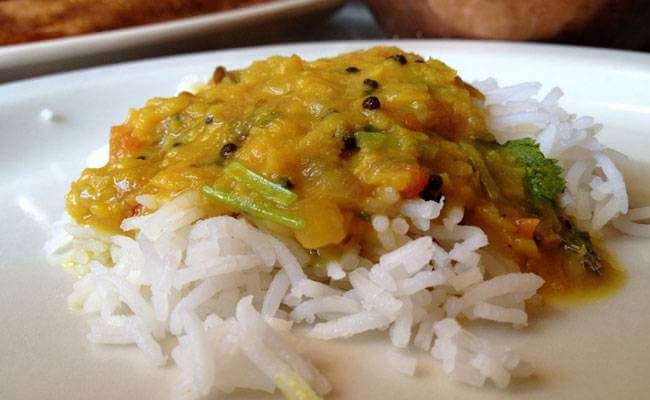Our Yoga expert, Navodita, tells us about three asanas and three bandhas. The Paripurna Nava Asana relieves bloating sensation in the abdomen due to gas and gastric complaints. It reduces fat around waistline and tones the kidneys. The Ardha Nava Asana improves the liver, gall bladder, and spleen. Jatara Parivartana Asana tones and eradicates sluggishness of the liver, spleen, and pancreas. It also cures gastritis and strengthens the intestines. It helps to relieve sprains and catches in the lower back and in the hip region. These supine poses may be accompanied by three Bandhas, which are essential along with Pranayama. Our columnist reveals the secret to holistic health, in the weekly column, exclusively in Different Truths.
After a good forward stretch with the forward bends and twists to energise your spine it’s time for some supine poses where you can work on your abdomen and lower back. In order to begin with some basic ones, you could balance into the Nava Asana or the Boat Pose and lie down in Jatara Parivartana Asana.
Paripurna Nava Asana
Paripurna means entire or complete. The posture here resembles that of a boat with oars, hence the name. Sit on the floor with the legs stretched straight in front. Place the palms on the floor by the hips, the fingers pointing to the feet. Stretch the hands straight and keep the back erect. This position is called Danda Asana. Exhale, recline the trunk slightly back and simultaneously raise the legs from the floor and keep them stiff with the knees tight and toes pointing forward.
Balance is maintained only on the buttocks and no part of the spine should be allowed to touch the floor, from which the legs should be kept at an angle of 60 to 65 degrees. The feet are higher than the head and not level with it. Remove the hands from the floor and stretch the arms forward, keeping them parallel to the floor and near the thighs. The shoulders and the palms should be on one level and the palms should face each other. Stay in this pose for about fifteen seconds with normal breathing.
This asana gives relief to persons who feel a bloating sensation in the abdomen due to gas and also to those suffering from gastric complaints. It reduces fat around waistline and tones the kidneys.
Ardha Nava Asana
Sit in Danda Asana. Interlock the fingers and place them on the back of the head above the neck. Exhale, recline the trunk back and simultaneously raise the legs from the floor, keeping the knees tight and the toes pointed. The balance of the body rests on the buttocks and no part of the spine should be allowed to touch the floor. One feels the grip on the muscles of the abdomen and the lower back. Keep the legs at an angle of about 30 to 35 degrees from the floor and the crown of the head in line with the toes. Hold this pose for about 30 to 35 seconds. Do not hold the breath in this asana, instead, do normal breathing.
The effect of Ardha Nava Asana is felt strongly on the improvement of the liver, gall bladder, and spleen. The two asanas can help strengthen the back.
One pose which is good for the stomach and can work wonders for the waistline too is the Jatara Parivartan Asana.
Jatara Parivartana Asana
Jathara means the stomach, the belly. Parivartana means turning or rolling about, turning around. Lie flat on the back on the floor. Stretch out both arms sideways in line with the shoulders, so that the body resembles a cross. Exhale, raise both legs together until they are perpendicular to the floor. They should remain stiff so do not bend them at the knees. Remain in this position for a few breaths. Exhale, and move both the legs sideways down towards the floor to the left until the toes of the left foot almost touch the fingertips of the outstretched left hand. Try and keep the back on the floor. Try not to lift the right shoulder off the floor. Both the legs should go down together, the knees being kept tight throughout. Turn the legs only from the hips. Stay in this pose for about twenty seconds. Remain with the legs perpendicular for a few breaths and then repeat the movements by lowering the legs to the right and turning the abdomen to the left.
This asana is good for reducing excess fat. It tones and eradicates sluggishness of the liver, spleen, and pancreas. It also cures gastritis and strengthens the intestines. It’s good for all the abdominal organs and keeps them well-massaged. It helps to relieve sprains and catches in the lower back and in the hip region.
These supine poses may be accompanied by Bandhas which are essential along with Pranayama.
Bandhas: Jalandhara, Uddiyana and Mula
Bandha means bondage, joining together, fettering or catching hold of. It is a posture in which you hold or contract certain organs and parts of the body.
The first Bandha is Jalandhara where Jala means the web or a net and a mesh. In this, the neck and throat are contracted and the chin is made to rest on the chest in the notch between the collarbones and at the top of the breast bone. It is practiced well while doing the Sarvanga Asana as one can easily do the neck-lock then. This Bandha regulates the flow of blood and prana to the heart, the glands in the neck and the head together with the brain.
Uddiyana means flying up. The process here is to lift the diaphragm high up the thorax and to pull in the abdominal organs against the back towards the spine. You do this by sucking in your breath and holding the stomach in. It exercises the diaphragm and abdominal organs. The cavity created by the lift of the diaphragm gives a gentle massage to the muscles of the heart, thereby toning it.
Mula means root, source, origin or cause, basis, and foundation. Here the region of the lower abdomen between the navel and the anus is contracted towards the spine and pulled up towards the diaphragm. The practice of contracting the anal sphincter muscles helps one to master Mula Bandha.
It is said that by the practice of these bandhas the sixteen vital parts are closed. The sixteen vital parts are the thumbs, ankles, knees, thighs, organs of reproduction, navel, heart, neck, throat, palate, nose, the middle of the eyebrows, forehead, head and Brahmarandhra (the aperture in the crown of the head through which the soul is said to escape on leaving the body).
Try out these Bandhas and poses until we are back with more next time.
©Navodita Pande
Photo from the Internet.








 By
By

 By
By
 By
By